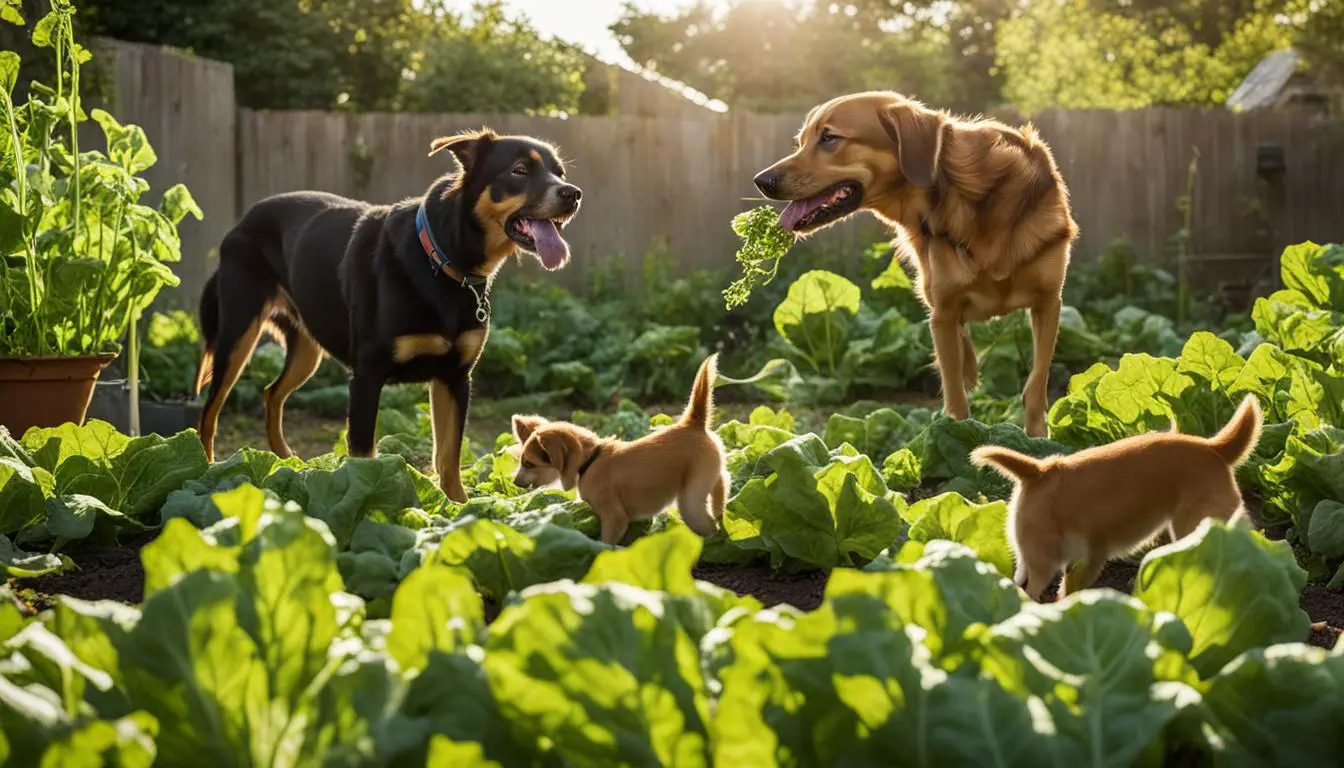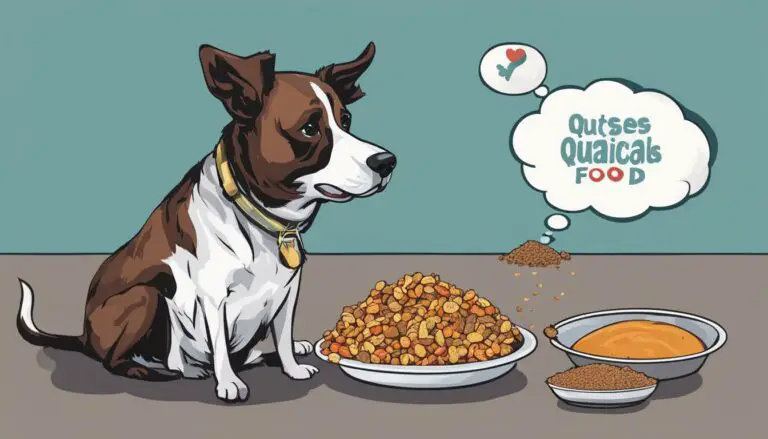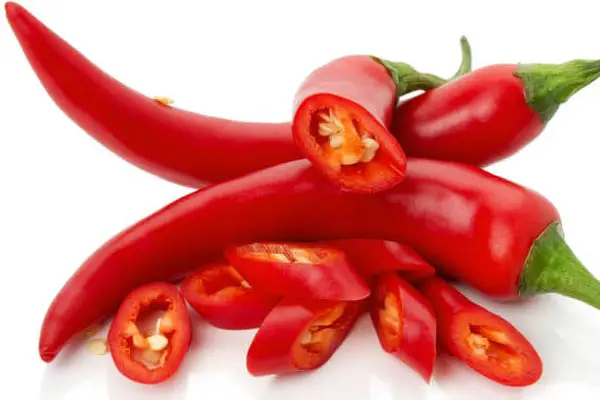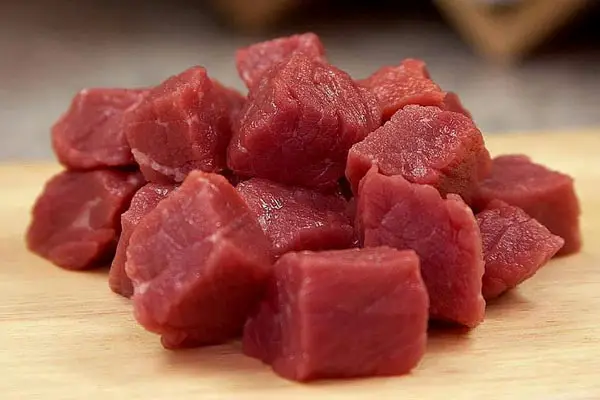Can Dogs Eat Kohlrabi? Uncovering the Truth in Pet Nutrition
Many pet owners may wonder if it is safe for their dogs to eat kohlrabi, a nutritious vegetable. While considering a dog’s dietary requirements, knowing that kohlrabi can be a healthy and safe addition to their diet is essential.
Packed with vitamins, minerals, and dietary fiber, kohlrabi contributes to a dog’s overall nutritional wellbeing. However, serving kohlrabi in moderation and preparing it appropriately is crucial to ensure it is suitable for dogs.
The Nutritional Benefits of Kohlrabi for Dogs
Here are some of the nutritional benefits that kohlrabi provides:
Vitamins
Kohlrabi is rich in vitamin C, a potent antioxidant that enhances the immune system and defends the body against free radicals. Additionally, vitamin C supports collagen production, promoting overall skin and coat health in dogs.
Minerals
In addition to vitamins, kohlrabi is rich in minerals such as calcium and potassium. Calcium is essential for maintaining strong bones and teeth, while potassium is vital for proper muscle function and nerve transmission. These minerals are crucial for supporting a dog’s overall health and wellbeing.
Dietary Fiber
Kohlrabi is good for dogs’ digestion and helps prevent constipation. It also makes them feel full, which is helpful for weight management. Introducing kohlrabi into a dog’s diet can provide various health benefits. However, serving it in moderation and preparing it properly is essential.
How to Safely Feed Kohlrabi to Dogs
When it comes to feeding kohlrabi to dogs, it’s essential to follow certain guidelines to ensure their safety and well-being. Here are some key points to keep in mind:
1. Preparation:
Prior to serving kohlrabi to your dog, it’s important to peel and thoroughly wash the vegetable to remove any dirt or pesticides. This helps ensure that the kohlrabi is clean and safe for consumption.
2. Raw or Cooked:
Kohlrabi can be served raw or lightly cooked for dogs. However, it is recommended to cook it slightly to improve digestibility, especially for dogs with sensitive stomachs. Cooking also softens the texture, making it easier for dogs to chew and digest.
3. Serving Size and Shape:
When offering kohlrabi to your dog, make sure to cut it into small, bite-sized pieces. This helps prevent choking hazards and makes it easier for your furry friend to consume. It’s essential to monitor your dog while they eat to ensure they are chewing properly and not swallowing large chunks.
4. Introduce Gradually:
Gradually introduce new foods like kohlrabi to your dog’s diet for the best results. Begin with a small amount and monitor your dog’s reaction. If there are no negative responses, slowly increase the portion size over time.
5. Monitor for Allergies or Digestive Issues:
Every dog is unique; some may have sensitivities or allergies to certain vegetables, including kohlrabi. Monitor your dog’s reaction after introducing kohlrabi into their diet.
If you observe signs of allergies or digestive problems like vomiting, diarrhea, or excessive itching, stop feeding kohlrabi and seek advice from your veterinarian.
Precautions and Potential Risks of Feeding Kohlrabi to Dogs
While kohlrabi can be a safe and nutritious addition to a dog’s diet, it is essential to be aware of certain precautions and potential risks. Some dogs may have sensitivities or allergies to certain vegetables, including kohlrabi.
It is crucial to monitor a dog’s reaction after introducing kohlrabi and discontinue if any adverse symptoms occur. Common signs of allergies in dogs include itching, redness, swelling, and digestive issues such as vomiting or diarrhea.
Serving Size and Preparation
When serving kohlrabi to dogs, it is essential to consider the serving size and preparation method. Kohlrabi should be served in small, bite-sized pieces to prevent choking hazards.
Additionally, it is recommended to peel and wash kohlrabi thoroughly to remove any dirt or pesticides. The vegetable can be served raw or cooked, but light cooking is recommended to improve digestibility for dogs.
It is crucial to avoid seasoning or adding any spices to kohlrabi when serving it to dogs, as certain seasonings can be harmful to their health.
| Potential Risks of Feeding Kohlrabi to Dogs | Precautions |
|---|---|
| Some dogs may have sensitivities or allergies to kohlrabi. | Monitor a dog’s reaction and discontinue if any adverse symptoms occur. |
| Seasoning or adding spices to kohlrabi can be harmful. | Avoid seasoning or adding any spices when serving kohlrabi to dogs. |
| Inappropriate serving sizes or preparation methods can lead to choking hazards or digestive issues. | Serve kohlrabi in small, bite-sized pieces and peel and wash thoroughly. |
| Consulting with a veterinarian is crucial to meet a dog’s specific dietary needs. | Always consult a veterinarian before significantly changing a dog’s diet. |
Other Canine-Friendly Vegetables to Consider
Here are some canine-friendly vegetables to consider:
Carrots: Packed with essential vitamins, minerals, and fiber, carrots are a low-calorie powerhouse. Their antioxidants support excellent vision and a robust immune system.
Spinach: Spinach contains vitamins A, C, K, and folate. It also contains iron, which is essential for healthy blood circulation. However, spinach should be fed in moderation, as excessive consumption can lead to calcium binding and kidney issues in some dogs.
Broccoli: Broccoli is a nutritious choice for dogs, offering fiber, antioxidants, and vitamins like C and K. It promotes digestive health and may aid in preventing specific types of canine cancer.
Green Beans: Enjoy the health benefits of green beans, a nutrient-rich and low-calorie vegetable that can be enjoyed cooked or raw. Packed with fiber, vitamins A, C, and K, as well as manganese and folate, they make a nutritious addition to your diet.
When adding vegetables to your dog’s diet, preparing them safely is crucial. Begin by washing the vegetables thoroughly to remove any dirt or pesticides. To prevent choking hazards, cut them into small, bite-sized pieces. Consider steaming or lightly cooking the vegetables before serving them to your dog for better digestibility.
| Veggie | Nutritional Benefits |
|---|---|
| Carrots | Rich in vitamins, minerals, and fiber. Promotes good vision and a healthy immune system. |
| Spinach | Packed with vitamins A, C, K, and folate. Contains iron for healthy blood circulation. |
| Broccoli | High in fiber, antioxidants, and vitamins C and K. It Supports digestive health and helps prevent certain types of cancer. |
| Green Beans | Nutritious and low-calorie. High in fiber, vitamins A, C, and K, manganese, and folate. |
Tips for Introducing Kohlrabi and Vegetables into a Dog’s Diet
Here are some tips to help you introduce kohlrabi and vegetables to your dog:
1. Start Slowly and Monitor
Introduce small portions of kohlrabi or other veggies to your dog and monitor their response for potential allergies or digestive issues like vomiting or diarrhea. Gradually introduce new foods to help their system adjust and ensure tolerance.
2. Increase Portion Size Gradually
Gradually increase the amount of kohlrabi or other veggies in your dog’s diet if there are no negative reactions. Remember, to maintain a balanced diet, vegetables should only constitute a small part, not exceeding 10% of their daily calorie intake.
3. Consult with a Veterinarian
Consulting with a veterinarian before significantly changing your dog’s diet is crucial. They offer personalized guidance, considering your dog’s dietary needs and overall health. This ensures that your dog’s nutritional requirements are met, and the vet can address any concerns or questions you may have about your dog’s diet.
4. Serve Vegetables in a Dog-Friendly Way
When preparing kohlrabi or other vegetables for your dog, it is important to serve them in a dog-friendly way. Peel and wash the vegetables thoroughly to remove any dirt or pesticides. You can serve them raw or lightly cooked to improve digestibility for your dog. Remember to cut the vegetables into small, bite-sized pieces to prevent choking hazards.
Growing and Preparing Kohlrabi for Dogs
It is a relatively easy plant to cultivate if you prefer to grow your kohlrabi. Kohlrabi can be grown from regular garden seeds in a sunny location. It takes approximately 7-14 days to grow, and once the kohlrabi reaches a height of 2-3 inches, it is ready to be harvested.
When preparing kohlrabi for dogs, it is important to peel and wash it thoroughly. This helps remove any potential dirt or pesticides that may be present on the vegetable. Once cleaned, kohlrabi can be served to raw or lightly cooked dogs to improve digestibility.
Growing and Preparing Kohlrabi: A Step-by-Step Guide
Follow these steps to grow and prepare kohlrabi for your furry friend:
- Select a sunny spot in your garden for planting kohlrabi seeds.
- Plant the seeds approximately 1/4 inch deep in well-draining soil.
- Water the seeds regularly to keep the soil moist but not waterlogged.
- After 7-14 days, the seedlings will start to emerge.
- Thin out the seedlings, leaving approximately 4-6 inches of space between each plant.
- Continue to water and care for the plants, providing them with adequate sunlight and nutrients.
- Harvest the kohlrabi when the bulbs reach a height of 2-3 inches.
- Peel and wash the kohlrabi thoroughly to remove any dirt or pesticides.
- Serve the kohlrabi to your dog, raw or lightly cooked, for improved digestibility.
| Growing and Preparing Kohlrabi for Dogs | |
|---|---|
| Step | Description |
| 1 | Select a sunny spot in your garden for planting kohlrabi seeds. |
| 2 | Plant the seeds approximately 1/4 inch deep in well-draining soil. |
| 3 | Water the seeds regularly to keep the soil moist but not waterlogged. |
| 4 | After 7-14 days, the seedlings will start to emerge. |
| 5 | Thin out the seedlings, leaving approximately 4-6 inches of space between each plant. |
| 6 | Continue to water and care for the plants, providing adequate sunlight and nutrients. |
| 7 | Harvest the kohlrabi when the bulbs reach a height of 2-3 inches. |
| 8 | Peel and wash the kohlrabi thoroughly to remove any dirt or pesticides. |
| 9 | Serve the kohlrabi to your dog, raw or lightly cooked, for improved digestibility. |
Conclusion
In summary, kohlrabi can be a nutritious addition to a dog’s diet when served in moderation and prepared correctly, offering essential vitamins, minerals, and fiber. However, vegetables should only constitute a small part of a dog’s diet, balanced with high-quality protein and other necessary nutrients.
FAQ
Can dogs safely eat kohlrabi?
Kohlrabi is a safe and healthy dog option when served in moderation and prepared properly.
What are the nutritional benefits of kohlrabi for dogs?
Kohlrabi is rich in essential nutrients such as vitamins, minerals, and dietary fiber, which can contribute to a dog’s overall health and well-being.
How should I safely feed my dog Kohlrabi?
When peeled and washed, Kohlrabi can be served to dogs in small, bite-sized pieces. For optimal digestibility, consider serving it raw or lightly cooked.
Are there any precautions or risks associated with feeding kohlrabi to dogs?
Some dogs may have sensitivities or allergies to kohlrabi, so monitoring their reaction and discontinuing if any adverse symptoms occur is essential. Avoid seasoning or adding spices to kohlrabi when serving it to dogs.
What other canine-friendly vegetables can I consider for my dog’s diet?
Carrots, spinach, broccoli, and green beans are all examples of dog-safe vegetables that can be included in a dog’s diet.
How should I introduce kohlrabi and other vegetables into my dog’s diet?
Begin by introducing small portions and gradually increase the amount over time. Keep an eye on your dog’s response and seek advice from a veterinarian to ensure their nutritional requirements are fulfilled.
How can I grow and prepare kohlrabi for my dog?
Kohlrabi can be grown from garden seeds in a sunny location. Once harvested, it should be peeled, washed, and served raw or lightly cooked for dogs.
How can I balance my dog’s diet with kohlrabi and vegetables?
Vegetables should only make up a small portion of a dog’s diet and should not exceed 10% of their daily calorie intake. Always consult a veterinarian to ensure your dog’s nutritional needs are met.






